Overview of What Is Shearling
When I first encountered shearling, I was captivated by its unique blend of luxury and practicality. So, what is shearling? In essence, it’s sheepskin that’s been tanned with the fleece still intact, creating a sumptuous material that feels like a warm embrace.
Here’s a closer look at its standout features:
- Insulation: The natural wool provides remarkable warmth, making it an ideal choice for chilly climates.
- Breathability: Unlike synthetic fabrics, shearling allows for airflow, keeping you comfortable without overheating.
- Durability: With proper care, shearling can last for years, making it a worthy investment for your wardrobe.
From my experience, wearing shearling is akin to donning a cloud. It’s not just about warmth; it’s about feeling enveloped in coziness. Whether it’s a stylish shearling jacket or a plush throw, this fabric adds a touch of elegance to any setting.

If you’re contemplating adding shearling to your collection, here are a few tips I’ve gathered along the way:
- Care is Key: Regular brushing helps maintain its texture. When necessary, take it to a professional cleaner who specializes in shearling.
- Styling Versatility: Pair it with denim for a casual look, or drape it over a sleek dress for an evening out. The options are limitless!
- Investment Piece: While it might carry a higher price tag, consider it a timeless addition that transcends trends.
Also, understanding ‘understanding shearling’ opens the door to a world of style and comfort that’s hard to resist.
What Is Shearling. The First Take
Shearling, for those unfamiliar, might seem like just another term thrown around in fashion circles, but trust me it’s much more. I remember my first encounter with it; I felt like I had discovered a secret weapon for both style and warmth. So, what exactly are we talking about when we bring up this iconic material?
Think of shearling as the Swiss army knife of cold-weather fashion: it’s both incredibly functional and undeniably chic. Not only does it keep you cozy during the coldest months, but it also looks timeless in a way few materials can.
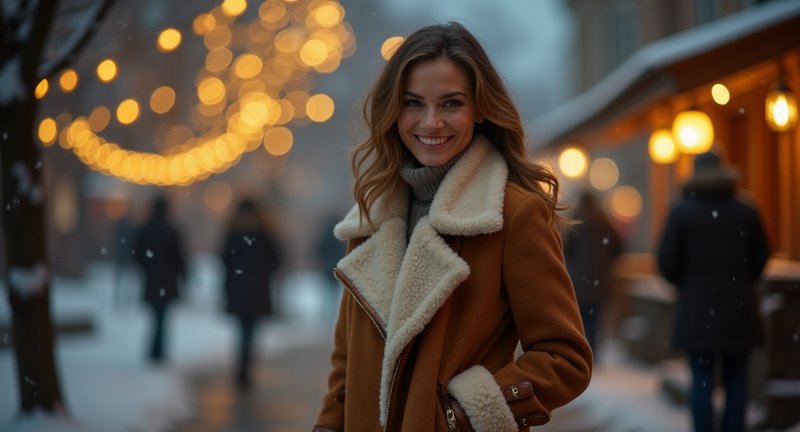
Here’s why:
-
Genuine Shearling: This isn’t your typical wool or faux fur situation. The material comes from sheepskin that’s been tanned with the wool still attached. The result? A luxuriously soft, yet durable, material that insulates like a dream.
-
Versatile Texture: One side is smooth, while the other is a plush, woolly layer. That duality means you get a jacket, a boot lining, or a bag trim that feels as good as it looks. I love the tactile contrast it’s like fashion’s version of a surprise twist.
-
Sustainability Angle: Surprisingly, real shearling is more eco-friendly than synthetic counterparts. It’s naturally biodegradable and often a byproduct of the meat industry, giving it a low-waste factor.
If you’re curious about how to style it, I’ll give you this tip: pair it with contrasting materials. Leather and shearling together? An absolute match made in fashion heaven.
Understanding Shearling
When you hear ‘shearling,’ you might imagine plush, cozy textures enveloping you in warmth. And you’d be right but there’s so much more to this material than meets the eye. Trust me, shearling is the secret sauce of cold-weather fashion.
Shearling isn’t just about soft comfort. It’s rugged yet luxurious, balancing function and style effortlessly. You see, it’s the inner side of sheepskin, tanned with the wool still attached, giving it that distinctive fluffy interior and velvety exterior.
One thing I’ve noticed with shearling is its ability to transcend seasons. Yes, it’s fantastic in winter, but the breathability of natural wool means you won’t overheat even during brisk fall days. It’s like nature’s own climate control keeping you snug without the bulk.
Now, here’s where it gets interesting: no two shearling pieces are alike. Depending on how it’s treated, you can get different textures and finishes. Whether it’s a buttery soft leather jacket or a rugged shearling-lined boot, the material adapts to whatever form it takes.
Of course, when I slip into a shearling jacket, there’s this feeling of timelessness. It feels less like a trend and more like an investment in something that will only get better with age. The way it molds to your shape? It’s like it’s been waiting just for you.
So, next time you come across shearling, remember you’re not just wearing a fabric. You’re wrapping yourself in history, craftsmanship, and a bit of nature’s own brilliance.
The History of Shearling Use
Shearling has an impressive heritage that stretches across centuries. It’s one of those materials that carries a legacy of warmth, ruggedness, and dare I say timeless appeal. When I first encountered it, I was struck by how deeply intertwined it is with human ingenuity and survival.
Back in ancient times, shearling was a necessity, not a luxury. People needed insulation against biting winters, and what better way than to use the hides and wool of sheep? It was practical, yes, but also resourceful a means of making the most of what nature provided.
Fast forward to the early 20th century, and shearling found itself in the skies, quite literally. Aviators sported shearling-lined jackets, not just for style, but for life-saving warmth at high altitudes. That rugged charm has stayed with shearling ever since, making it an enduring favorite among adventurers and fashion enthusiasts alike.
Even in modern fashion, shearling continues to evolve, but it hasn’t lost its roots. Luxury brands have reimagined it, turning a once utilitarian material into something chic and sophisticated. Personally, I find that balance between practicality and high fashion to be fascinating there’s a certain magic in how shearling has transformed while staying true to its essence.
And let’s be honest, shearling isn’t just about history it’s about feeling. Every time I slip on a shearling jacket, it’s like being wrapped in a piece of human history, as well as a cozy embrace. Trust me, there’s no other material quite like it.
Characteristics of Shearling Material
Shearling material is one of those fabrics that you instantly recognize by its warm, luxurious feel. What makes it special is not just its appearance, but how it feels on the skin like wrapping yourself in a cozy, protective cocoon. There’s a depth to it, both tactile and visual, that always catches the eye.
The defining trait of shearling is its natural wool side, which remains attached to the hide. This combination creates a fabric that’s lightweight, yet incredibly insulating. It’s funny how something so soft can feel so substantial at the same time, offering warmth without the bulk you’d expect from heavy winter fabrics.
Shearling naturally regulates temperature, keeping you warm without overheating. I’ve worn shearling jackets on bitterly cold mornings, and there’s a magic in how the material adapts to body heat. Plus, it’s naturally moisture-wicking, which means you won’t get that uncomfortable, clammy feeling you might with synthetic alternatives.
What I’ve always appreciated about shearling is its durability. Over time, it ages beautifully, gaining a unique patina and texture that gives it character. It’s like wearing a story each scuff and crease tells of adventures past. If you care for it right, it can last for years, becoming even more precious as it molds to your shape and style.
The beauty of shearling is in its raw elegance. It’s rugged yet refined, offering a down-to-earth luxury that never feels pretentious. It’s the kind of material that makes you feel both stylish and comforted, as if it was made just for you.
How Shearling Is Different from Sheepskin
Shearling and sheepskin are often thought to be the same thing, but they aren’t quite the identical twins they seem to be. The main difference lies in how they’re crafted, which really changes the texture, warmth, and even the way they feel when worn.
Shearling is actually the hide of a lamb or sheep where the wool remains attached, but it’s treated differently. Sheepskin, on the other hand, is typically shorn, leaving a smooth, even surface. The cozy, luxurious appeal of shearling comes from that fluffy inner layer of wool, giving you warmth without the weight.
In contrast, sheepskin often feels more straightforward, like a smooth suede-like texture on one side and a more refined look on the other. Shearling’s raw edge and wooly interior make it a bit more rugged, yet simultaneously plush. It’s like wearing a warm cloud against your skin, and once you’ve experienced it, you don’t forget.
From my own experience, shearling pieces tend to be a bit more indulgent in feel – almost like they’re hugging you in softness. But sheepskin brings a more polished, sleek appearance that feels just as classic but with a different kind of edge.
So, when you’re deciding between the two, think about how you want to feel in the piece. If you want something that wraps you in cozy warmth, shearling might be your pick. But if you’re looking for something sleeker with a smoother finish, sheepskin is the way to go.
The Process of Producing Shearling
Producing shearling is more than just a manufacturing process it’s an art form, shaped by tradition and attention to detail. I’ve always been fascinated by how this luxurious material makes its way from farm to fashion. The journey starts with the finest sheepskins, and there’s a lot more to it than meets the eye.
First, let’s get to the basics. The process begins with selecting high-quality sheepskins, usually from sheep that have been raised in specific climates for their soft, dense wool. It’s about the balance between keeping the wool on and treating the skin underneath, making shearling unique. Once selected, the skins go through these crucial steps:
-
Tanning: The skin is carefully treated to preserve it. This is where the magic starts. Tanning ensures that the leather stays soft, durable, and long-lasting. It’s a delicate process, using either traditional vegetable tannins or modern chemical methods, depending on the desired outcome.
-
Shearing: To get that uniform plush texture, the wool side is trimmed. Not too short, not too long just the right length to maintain warmth without bulk. There’s a fine line here, and getting it right is key.
-
Finishing and Dyeing: The skins are then dyed to perfection. Sometimes it’s left natural, but more often than not, shearling is colored to match the designer’s vision. Afterward, the skin may be polished or brushed for that irresistible softness.
Shearling is a remarkable blend of practicality and indulgence. The final product is both tough and soft, giving us that cozy, cloud-like feel while also being durable enough to handle the elements.
Common Applications of Shearling in Fashion
Shearling has found its way into almost every corner of fashion, bringing warmth and texture to some unexpected places. Over the years, I’ve noticed how this luxurious material isn’t just confined to coats anymore it’s everywhere if you look closely. Let me walk you through some of the more common, and perhaps surprising, ways shearling is used.
-
Outerwear: This is where shearling truly shines. The material’s insulation makes it perfect for jackets and coats that keep you both warm and stylish. But don’t think it’s all rugged. Shearling-lined trench coats and aviator jackets balance both practicality and fashion-forward appeal.
-
Footwear: Have you ever slipped into a pair of shearling-lined boots? They’re like a cozy hug for your feet. It’s not just boots, though. Designers are incorporating shearling into sandals and slippers, giving that luxurious texture even to summer shoes.
-
Accessories: Shearling goes far beyond just clothing. I’ve seen shearling pop up on everything from handbags to earmuffs. Shearling-trimmed bags, for instance, add a plush, tactile quality that elevates even the simplest outfit.
-
Homewear & Loungewear: Shearling isn’t just for the outside world. Its presence in loungewear and home accessories is growing, with robes, slippers, and blankets. Who says you can’t bring a little luxury into your downtime?
-
Unexpected Details: One of my favorite applications of shearling is in accents. Think of collars, cuffs, or linings in garments where you’d least expect them. It adds a soft, cozy touch that immediately transforms an outfit from ordinary to extraordinary.
The beauty of shearling is how versatile it is. Whether you’re dressing up for a cold day or lounging at home, it’s got your back literally and figuratively.
Shearling in Home Decor
Considering cozy, luxurious textures, shearling is a game changer in home decor. If you’re wondering ‘What Is Shearling?’, let me tell you – it’s not just something you see in winter jackets or boots. Shearling is where practicality meets soft, plush elegance, and it can make any room feel warmer and more inviting.
Incorporating shearling into your living space is like wrapping your home in a soft, natural hug. Whether you’re updating your living room or simply adding texture to a bedroom, shearling can completely transform the vibe. Here are some delightful ways I’ve seen and used shearling in home decor:
- Shearling Throws: Tossing a shearling throw over a sofa or armchair instantly adds a layer of warmth and texture, making it the perfect accessory for a cozy reading nook.
- Accent Pillows: If you’re not ready to commit to large pieces, start small with shearling pillows. They can soften the look of leather furniture or add an extra layer of comfort to a minimalist setting.
- Rugs: A shearling rug can take a space from cold and bland to soft and inviting in seconds. They work especially well in spaces where you walk barefoot, like bedrooms or bathrooms.
- Shearling Upholstery: This is a bold move but trust me, it’s worth it. A shearling-upholstered chair or ottoman brings warmth and sophistication, perfect for creating a statement piece in your home.
Whether you go all out with shearling or just dip your toes into the trend, it’s a versatile material that works well in almost any interior. It’s not just about looks it’s about how your home feels too.
Advantages of Using Shearling
Using shearling in fashion has more benefits than one might first assume. It’s one of those materials that, once you’ve experienced it, you never quite forget. From my own years of experimenting with different fabrics and textures, I can say that shearling truly stands out.
First, let’s talk about the warmth. Shearling naturally insulates. On those bone-chilling days, a shearling jacket will keep you warmer than most synthetic alternatives. It’s not just warmth, though it breathes. While synthetic materials trap moisture, leaving you sweaty and uncomfortable, shearling manages to keep you dry, letting air flow while locking in your body’s natural heat.
Then there’s the texture. The soft, plush feel of shearling against your skin is like wrapping yourself in a cloud. Whether it’s a jacket, boots, or gloves, you’ll notice an immediate difference in comfort.
But beyond warmth and comfort, shearling is durable. If you’ve ever had a shearling coat, you know it’s built to last. I’ve had pieces in my wardrobe for years, and they still look as good as they did the day I bought them. With proper care, shearling can outlive many other fabrics.
Let’s not forget its versatility. Whether you’re aiming for a rugged, outdoorsy look or something more sleek and urban, shearling can fit the bill. It pairs well with denim, wool, leather you name it. It’s a fabric that speaks to both luxury and functionality.
To summarize the advantages:
- Warmth without bulk
- Breathable and moisture-wicking
- Luxuriously soft texture
- Long-lasting durability
- Stylish and versatile
When it comes to both practicality and style, shearling ticks all the boxes.
Shearling Care and Maintenance Tips
Caring for your beloved shearling piece starts with one key principle: avoid over-complicating it. I’ve learned over time that less is often more when it comes to maintaining the luxurious texture and softness of shearling.
The first thing I always do is shake it out after wearing it. It’s a simple habit, but it helps remove any surface dust or debris. You’ll be amazed at how much longer your shearling looks fresh with this quick trick.
In relation to spills, dabbing is your best friend. Don’t rub; blot it gently with a clean, dry cloth. I’ve made the mistake of scrubbing, and trust me, it only makes the stain settle deeper into the fibers.
Brushing the wool side occasionally keeps it fluffy and soft. Use a soft-bristle brush, and always go with the grain. The key is to be gentle let the brush do the work, don’t force it.
One tip I picked up is storing your shearling in a breathable garment bag. Never plastic. It needs to breathe, and keeping it in plastic will trap moisture, leading to mildew or odor something you absolutely don’t want.
Also, if you ever think about cleaning the whole piece, resist the urge to throw it in the washing machine. Shearling is delicate. A professional cleaner who specializes in leather and shearling is the safest bet.
Treat your shearling with the same care you would a treasured friend, and it will reward you with years of warmth and style.
The Full Spectrum of What Is Shearling
Shearling oh, the versatility and charm of this material! In all my time working with fabrics, there’s something special about shearling that always stands out. It’s not just a winter must-have; it’s a material with depth, character, and warmth that’s hard to find elsewhere.
Shearling has two sides to it, both literally and figuratively. On one side, you’ve got the buttery, soft suede, and on the other, that plush, cozy wool lining. Together, they create a garment or accessory that is both rugged and luxurious. But the beauty of shearling doesn’t stop at its dual texture. It’s an incredibly functional material, too.

Here’s why shearling is so much more than just a stylish choice:
-
Insulation & Warmth: The wool retains heat, making shearling naturally insulating. It keeps you warm without suffocating you in bulk.
-
Breathability: Unlike synthetic fabrics, shearling allows your skin to breathe, so you won’t overheat. The balance is perfect.
-
Durability: Shearling garments last. They withstand harsh conditions while looking timelessly stylish.
-
Versatility: Whether you’re in the mood for a rugged jacket or a refined winter hat, shearling fits a variety of styles. And let’s not forget its adaptability dressed up or down, it never feels out of place.
It’s a material that invites touch. I’ve often found myself absent-mindedly running my hand along a shearling coat, appreciating the texture and warmth it offers. It’s one of those materials that, once you experience it, you understand why it’s so sought after.
Now, isn’t it fascinating how this fabric seamlessly merges practicality with style? That’s the full spectrum of shearling versatile, durable, and always effortlessly chic.
Popular Shearling Products
When discussing shearling, there’s something irresistibly tactile about its soft, cozy texture. In my wardrobe, a shearling-lined jacket or a pair of shearling boots is not just practical, it’s pure indulgence. From high fashion to everyday wear, this material has a timeless appeal.
One of my personal favorites is the shearling coat. It’s the perfect blend of rugged and luxurious, keeping you warm while still looking effortlessly chic. I also adore shearling slippers nothing says ‘home’ like sliding into a pair of those on a chilly morning.
For anyone drawn to statement accessories, shearling bags are having a moment. They add a touch of texture that elevates even the simplest outfit. The natural variations in the material give each piece its own unique character, and that’s something I love.
Then there are shearling-trimmed jackets, which offer a stylish contrast between sleek leather or suede and the plush softness of shearling. Whether you’re wearing it on a casual day out or to a night event, it never feels out of place.
In the world of footwear, shearling-lined boots have become a cold-weather staple. I’ve worn mine through countless winters, and they always manage to keep me both warm and stylish. They’re the kind of boots that feel like an old friend comforting and reliable.
Sustainable Aspects of Shearling
Sustainability often feels like a buzzword, but when it comes to shearling, it’s woven into the very fabric of the material. From my experience, shearling’s eco-friendliness comes from its natural properties. You’re getting both the leather and the wool in one piece, which reduces waste right from the start.
Now, compare that to synthetic alternatives. Sure, they can mimic the look, but not the feel, nor the breathability. Unlike plastic-based options, shearling is biodegradable, which means when it’s finally done with its long life, it returns to the earth. It’s a rare blend of luxury and responsibility.
I also love how shearling supports ethical farming practices. Many producers are committed to humane animal treatment, which adds another layer of consciousness to wearing it. Knowing where the material comes from – often small, local farms – makes it more personal.
But sustainability isn’t just about how materials are sourced. It’s also about longevity, and shearling has a reputation for lasting a lifetime if treated with care. I’ve seen pieces passed down through generations, still as warm and stylish as ever. When you invest in shearling, you’re not just buying a coat, you’re making a choice that aligns with a future-minded way of living.
The beauty of it? You don’t have to sacrifice comfort for sustainability. The natural warmth and softness of shearling is unmatched, making it a sustainable luxury that doesn’t feel like a compromise.
Shearling vs. Faux Shearling: A Comparison
With respect to cozy outerwear, there’s an age-old debate: shearling or faux shearling? As someone who’s had a love affair with both, I can tell you, the differences go beyond just texture.
Real shearling is like wrapping yourself in nature’s own warmth soft, breathable, and durable. It’s a true investment piece. There’s something undeniably luxurious about slipping into a genuine shearling coat. It molds to your body over time, like a well-loved leather jacket, developing character with every wear.
On the other hand, faux shearling offers an ethical alternative for those of us who cringe at the thought of wearing animal products. It’s lighter, often more affordable, and nowadays, almost indistinguishable from the real deal at a glance. But let me tell you, the synthetic nature of faux shearling means it doesn’t quite match the breathability of its natural counterpart.
However, faux shearling excels in one area: care. You don’t have to baby it the way you would real shearling. Spills? No problem. Toss it in the wash or give it a quick wipe down. Try that with a genuine shearling jacket, and you’ll likely shed a tear.
Choosing between them really depends on your priorities. Do you lean toward ethical consumption, or do you crave the unparalleled comfort and craftsmanship that comes with the real thing? Both have their place in your wardrobe, but in different ways.
What You Should Know
Are sheep killed for shearling?
No, sheep are not killed solely for shearling. Shearling comes from lambs or sheep that are shorn for their wool and then the hide, with wool attached, is tanned to produce the material. While the animal is eventually used for meat or other products, shearling is typically sourced as part of the broader industry for both wool and meat, not from animals killed just for their pelts.
Is shearling a fur or leather?
Shearling is a combination of both fur and leather. It is made from the skin of a lamb or sheep, with the wool still intact. The wool side remains soft and fluffy, while the skin side is tanned to create a leather backing. This makes shearling distinct because it integrates both fur and leather in a single piece of material, offering warmth and durability.
Is shearling fake fur?
No, shearling is not fake fur. Shearling is made from the actual hide of a sheep or lamb with the wool still attached, while fake fur is a synthetic material designed to mimic the appearance and feel of real animal fur. Shearling is a natural product derived from animals, unlike faux fur, which is typically made from polyester or acrylic.
What is the difference between shearling and sheepskin?
The main difference between shearling and sheepskin lies in how they are processed. Sheepskin refers to the hide of a sheep with the wool removed or left on, whereas shearling specifically refers to a lamb or sheep hide with the wool still intact after a single shearing. Shearling is prized for its soft, dense wool, whereas sheepskin may not always include the wool or may be processed differently.
Is it cruel to wear shearling?
Whether wearing shearling is considered cruel depends on personal beliefs and ethics regarding the treatment of animals. Shearling comes from sheep that are primarily raised for meat and wool, so the hide is often a by-product of these industries. Some argue that as long as animals are treated humanely, shearling use is acceptable. However, animal rights advocates may consider any animal-derived product as unethical.
Are sheep killed for Uggs?
Uggs are often made from sheepskin, which means the sheep used for their production are generally part of the broader meat and wool industries. The animals are not killed solely for the purpose of making Uggs, but their skins are a by-product of their eventual use for meat. As with many leather and shearling products, the hides are repurposed for various goods like Ugg boots.
Why is shearling expensive?
Shearling is expensive because it is a high-quality natural material that requires careful processing. The tanning of the hide and preservation of the wool must be done skillfully to maintain its luxurious feel and durability. Additionally, shearling provides excellent insulation, comfort, and longevity, making it a premium choice for jackets, boots, and other items. The cost reflects the labor-intensive process and the benefits it offers in terms of warmth and style.
How to tell if real shearling?
To tell if shearling is real, check both sides of the material. Real shearling will have wool on one side and soft leather or suede on the other. The wool will feel dense and warm, while synthetic versions often have a more uniform or plasticky feel. Additionally, real shearling tends to have an organic texture and a natural lanolin scent, which fake shearling lacks.
Is shearling animal friendly?
The animal-friendliness of shearling depends on how the sheep or lambs are treated during their lives. If sourced from ethical farms where animals are treated well and raised for multiple purposes, shearling can be considered more sustainable. However, because it is derived from animals, it may not be seen as entirely animal-friendly by those who oppose the use of animal products in general.
Are sheep harmed for sheepskin?
Sheep are not harmed specifically for their sheepskin. Sheepskin is typically harvested as a by-product of the meat industry, meaning the animals are primarily raised for their wool or meat. The hide is then repurposed for various products. The ethical considerations depend on the treatment of the sheep throughout their lives, but they are not killed solely for their skins.
Do sheep get killed after shearing?
No, sheep are not killed after shearing. Shearing is a process where only the wool is removed, and it is a routine part of sheep farming. In fact, regular shearing is necessary for the health of the sheep to prevent issues like overheating and infections. The sheep continue to live and regrow their wool, which is harvested again in future seasons.



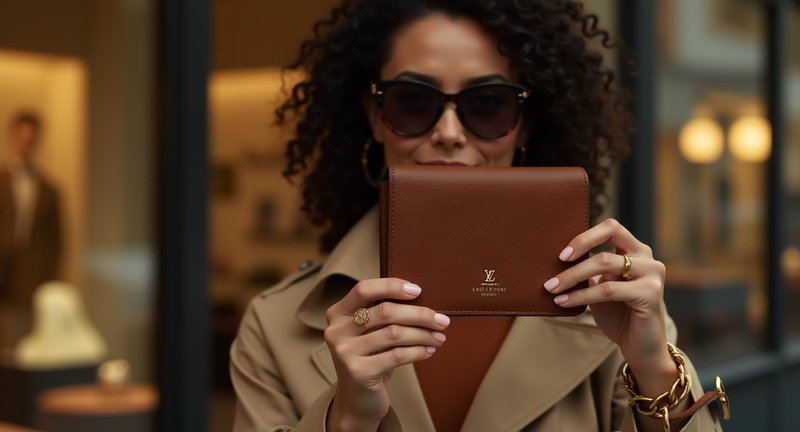
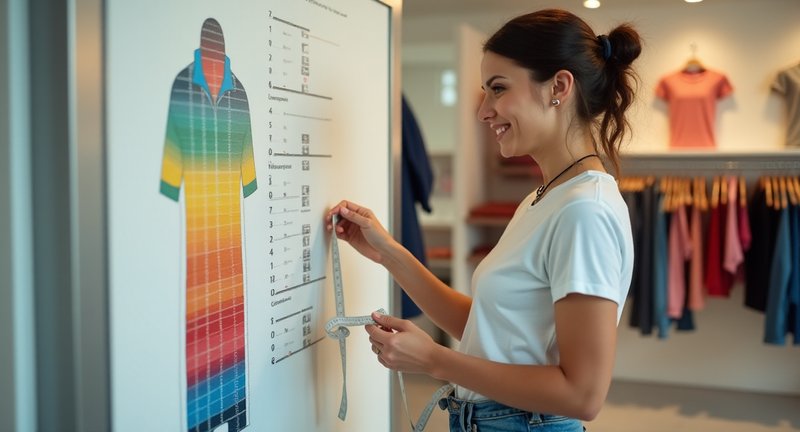
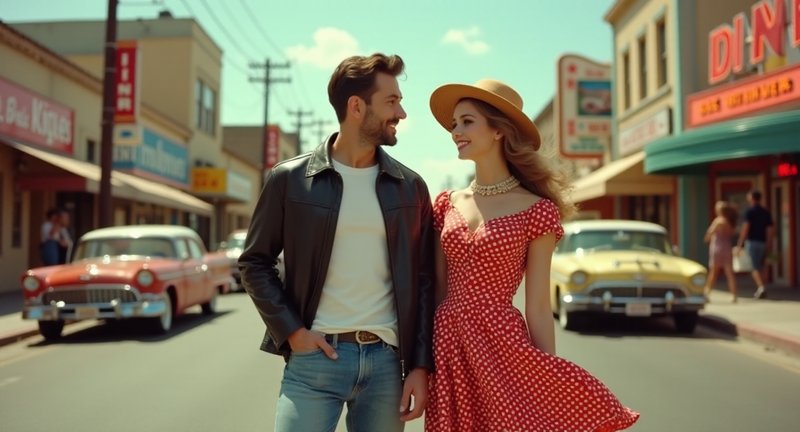


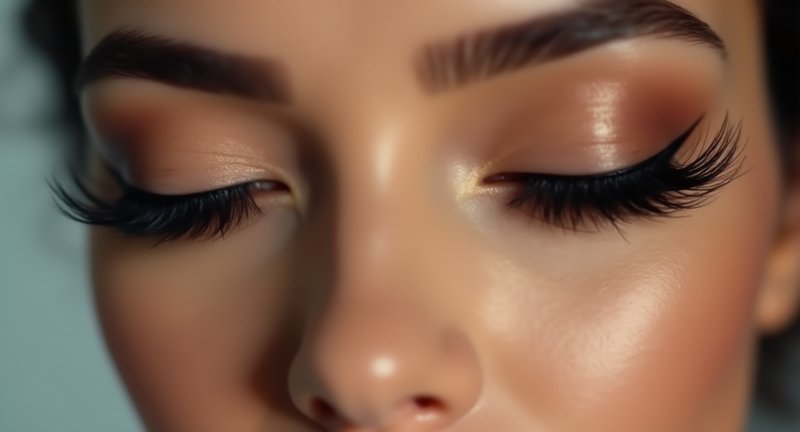
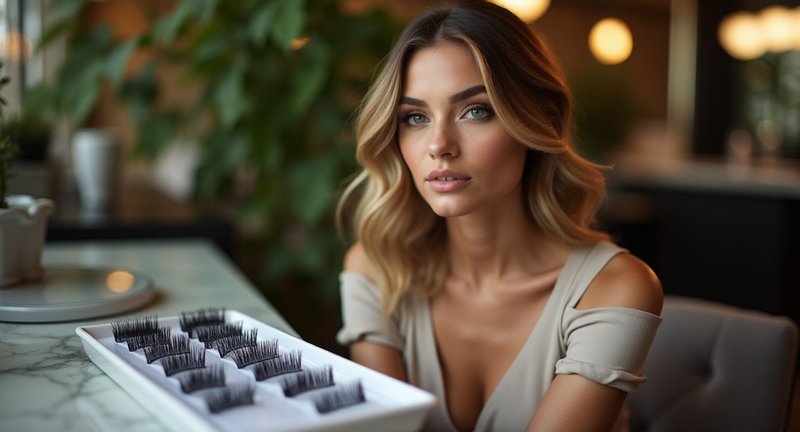
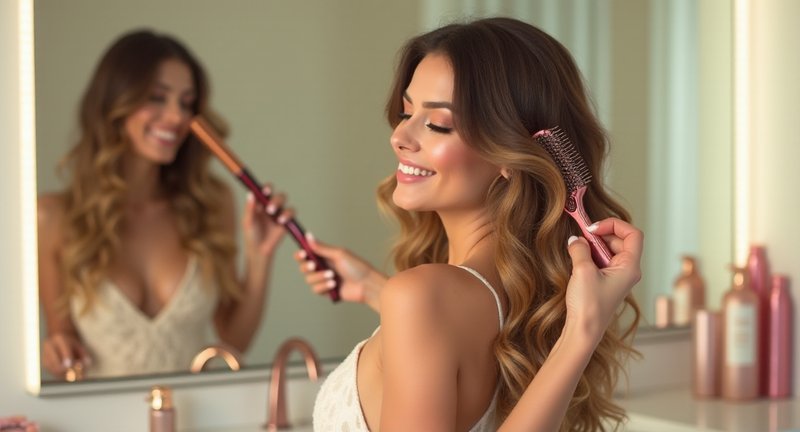
What a delightful take on shearling in home decor! I completely agree that incorporating shearling pieces can transform a space into something warm and inviting. I recently added a shearling throw to my living room, and it instantly made the area feel cozier. I love the idea of shearling accent pillows; they’re such a simple way to add comfort without overwhelming the decor. And who doesn’t love the idea of a soft shearling rug underfoot? It truly elevates the comfort of any room. Your suggestions are fantastic and inspire me to experiment more with this luxurious material at home!
You’ve captured the versatility of shearling beautifully! It’s amazing how this material has woven itself into different facets of fashion. I’ve had a pair of shearling-lined boots for years, and they feel like stepping into a warm cloud perfect for those chilly mornings! Your point about shearling not just being for outerwear resonates with me; I recently picked up a shearling-lined handbag, and it elevates any outfit I wear. Plus, the idea of incorporating shearling into loungewear is brilliant! We all need a touch of luxury while lounging at home, don’t we? I love the thought of shearling accents as well those little details can truly transform a look. Your insights inspire me to explore more ways to incorporate this fabulous material into my wardrobe!
I absolutely love your perspective on shearling! It’s fascinating how much artistry goes into its production. The transition from raw sheepskin to a luxurious product truly highlights the craftsmanship involved. I never realized how significant the shearing process is in determining the texture and comfort. As someone who appreciates both fashion and functional textiles, I find shearling’s blend of durability and softness to be just perfect for winter. Can’t wait to see how it continues to evolve in the fashion world!
This post is so enlightening! I’ve always loved shearling but never fully understood the difference between shearling and sheepskin until now. The way you break it down makes it so clear! It’s interesting to think about how shearling has that fluffy inner layer of wool, creating an enveloping warmth that feels like a warm cloud perfect description! I think it’s also intriguing how each material brings its own personality to the table; shearling feels more relaxed and inviting, while sheepskin carries that polished elegance. It’s almost like choosing between a comfy sweater and a tailored blazer! I’d love to hear more about your personal experiences with each fabric and maybe your top picks for shearling pieces. Thanks for such a thoughtful post!
Your description of shearling as a ‘cozy, protective cocoon’ is spot on! I completely agree that there’s something magical about the tactile experience of wearing shearling. I’ve owned a few shearling pieces over the years, and they never fail to amaze me with their warmth and adaptability. On those frigid mornings, I can step outside without a worry, knowing I’ll stay snug without feeling bulky. The way shearling ages gracefully is another charm; it truly becomes a part of your personal style over time! I also appreciate that it’s moisture-wicking, which is a game changer in winter weather. It’s such a relief to avoid that clammy feeling that often comes with other fabrics. Your post has reminded me to take better care of my shearling coat it’s practically a beloved friend at this point!
I absolutely love your insights on shearling! It’s fascinating how a material can carry so much history and still feel relevant today. I remember the first time I slipped into a shearling jacket; it was like wearing a hug! The way you described its evolution from ancient necessity to modern luxury really captures the essence of this fabric. It’s incredible to think about aviators relying on shearling for warmth in such extreme conditions. The blend of ruggedness and style truly makes shearling a standout choice for anyone looking to add a unique piece to their wardrobe. Plus, the idea that it carries the stories of those who wore it before adds a beautiful depth to every piece. Thanks for sharing such a delightful perspective!
Your insights into shearling are spot on! It’s fascinating how this material combines luxury and practicality, making it a staple in cold-weather fashion. I love that you mentioned its duality the smooth exterior paired with the plush interior creates such a unique tactile experience. My shearling-lined boots are my go-to for chilly days, as they provide warmth without being too bulky. Plus, I had no idea about the sustainability aspect; it’s a great conversation starter whenever someone admires my shearling pieces! And you’re right about it transcending seasons; I’ve worn my shearling jacket during brisk fall days and felt perfectly comfortable. The fact that each shearling item is unique adds to its charm, too. Investing in a shearling piece truly feels like investing in a work of art. Cheers to embracing this timeless fabric!
I love how you described shearling as a ‘secret weapon’ for style and warmth! It’s such a perfect fit for any wardrobe, and the way it adapts to different outfits is incredible. Can’t wait to try it out this season!
I completely resonate with your take on shearling! It really is like wearing a cloud. I remember the first time I slipped into a shearling jacket it felt like a warm hug on a chilly day. The insulation and breathability are game changers for fall and winter wear. I also appreciate the durability aspect; investing in quality shearling means you’re not just buying a piece of clothing but a timeless addition to your wardrobe that will last for years. Plus, styling it with denim for a casual vibe or draping it over a chic dress is such a versatile approach! The care tips you shared are incredibly helpful too; brushing really does make a difference. I’m already planning my next shearling purchase. Thanks for the inspiration!